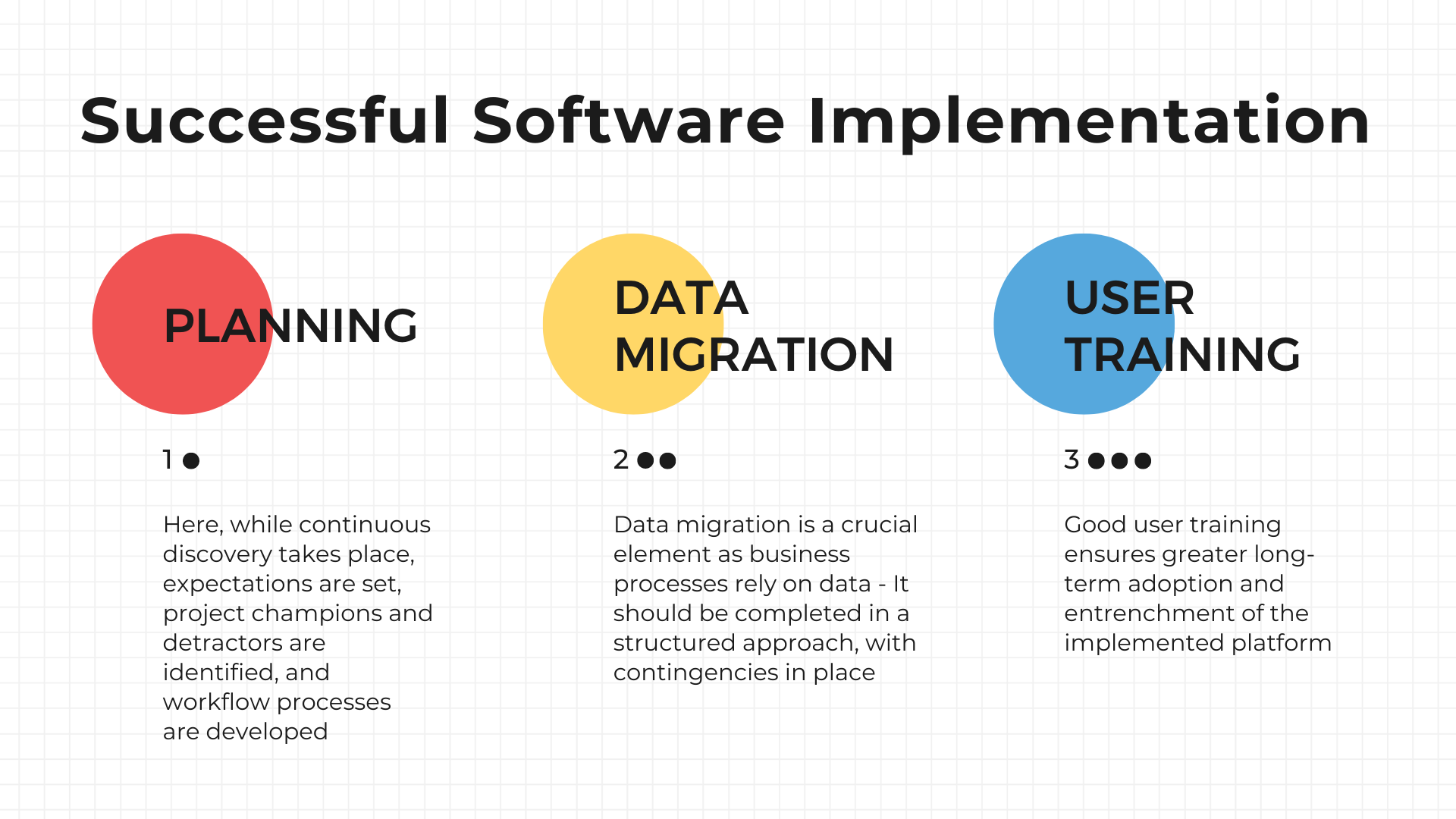As the world becomes increasingly dependent on technology and its ability to maximise efficiency, having the right software solution for your business is critical to driving growth and profitability. While implementing software can be a challenge, the right approach can enable organisations to save time, reduce costs, and increase productivity.
But how can an organisation be sure they will receive the required value out of the software that’s been procured?
Businesses should explore common challenges in their industry or sector regarding software implementations and how those challenges have been overcome. This will stand any business in good stead to anticipate, prepare for and overcome possible hurdles in their implementation journey.
Once the software partner/solution has been chosen, the implementation process can be made more successful by ensuring that sufficient time and effort is dedicated to processes, data and people.
Consider the following top 3 tips for successful software implementation:

1. Planning
An implementation plan needs to be clear and have measurable goals. This process can be complex, time-consuming, and costly. Therefore, a step-by-step strategy is critical and can significantly decrease the possibility of implementation-failure.
The reasons for which organisations require software tools can range from needing to scale up a particular department to improving organisation-wide efficiency. It is important to delineate the implementation process to ensure that the software tool provides its intended value in the expected time – The failure to do so can result in further loss of time, resources, and money.
2. Data Migration
A critical step within software implementation is migrating data from one system to another.
Before data migration can take place, businesses need to consider things such as what and how data will be transferred.
Once the data cleansing process has been completed and before the new software goes live, it is important for the organisation to have a strict process in place regarding how data collection and maintenance will take place going forward.
This will ensure data integrity for the soon-to-be implemented system and prevent the inheritance of bad data and misuse of previous systems.
3. User Training
It is important for training to be made available for different groups, and not just for the end-user. To ensure maximum efficacy is achieved from the beginning, training should take place systematically and remain available regularly to address any knowledge gaps, challenges, or software changes, as and when they occur.
Providing ongoing support after the implementation process has been concluded is imperative to its long-term success. This can exist in the form of a central knowledge base and continued tech support.
No implementation plan is complete without factoring in risk. A comprehensive plan should identify, analyse, evaluate, and treat risk related to the implementation.
Having the right approach and a committed team can improve the likelihood of smooth software adoption and future success of the organisation as a whole. With the right plan and careful execution, software implementations can be carried out successfully and enable organisations to reap the long-term benefits thereof.











